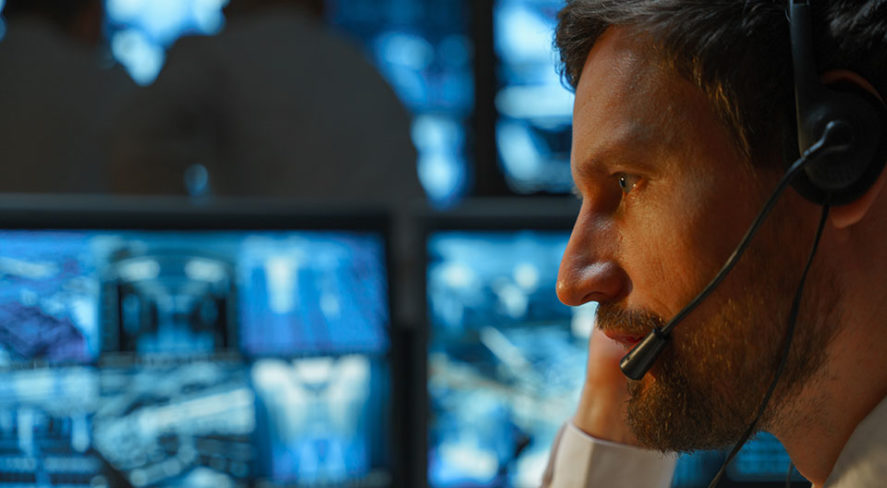ISC East Session Preview: Sound in the Security Ecosystem

ISC East 2022 is coming up Nov. 15-17 in New York City, and the Security Industry Association (SIA) and ISC East recently revealed full conference details for the SIA Education@ISC East program, including keynote presentations from top luminaries and over 30 sessions from top industry expert speakers on the most current business trends, technologies and industry developments.
Among the robust lineup of conference sessions is the presentation Sound in the Security Ecosystem. In this session, SoundSecure President Cameron Javdani and Zenitel Americas President Dan Rothrock will explore how audio technologies interact in access control and video surveillance applications, the business case for integrators to offer audio and the legal and privacy best practices for using sound in security. In this blog, Javdani and Rothrock share expert insights on this critical topic and give a sneak peek of what to expect during this session.

Think of the last time you were on a Teams or Zoom call waiting to hear an important update from a colleague. When they began to share their critical information, suddenly the meeting and the group’s momentum grinds to an abrupt halt for a simple reason. They’re on mute.
A flurry of activity then ensues with everyone shouting over each other: “You’re on mute! You’re muted!” And nothing happens until sound is restored. Users hate it when they can see someone trying to communicate something important but can’t hear anything. It’s not an acceptable way to communicate or understand a situation. But this undesired configuration is exactly what the security industry commonly delivers to customers.

We rely on audio to collaborate with our colleagues, customers, vendors and more. It’s often acceptable to turn off the video while speaking in a Teams or Zoom meeting, but you can’t turn off your audio, or you won’t be heard.
The same can be said with other daily tasks and experiences. For example, have you ever watched a movie in a theater and the sound suddenly stopped working? More than likely, the movie stopped until the sound was fixed. Or if it could not be fixed, you probably left the theater, and your money was refunded. After all, it’s pointless to watch a movie without sound, as you are only getting half of the experience, right?
Video and sound pair together because they each convey different types of information. Having one without the other leaves users missing critical information. And when security operators, central stations and emergency personnel respond to an alarm, they need all the information to understand the security threat at hand.
Sound in Security
Audio provides information that video or access control cannot. The sounds a security guard can hear can be more important than the sights he sees. During a security event, a suspect may say the name of his accomplice or other key information, such as speaking with an accent or giving clues on their actions. You can’t get that information with video or access control alone.
Audio is also compatible with other security systems. More than four out of five IP cameras and nearly all analog DVRs have audio inputs, because security equipment manufacturers know that pairing audio with video makes sense to give users the whole picture.
And with regards to recording laws and best practices, audio is recorded in all 50 U.S. states. Think of the first thing you hear when you call a customer service line. They say, “This call is recorded,” so there’s no expectation of privacy on the call. You’ve probably seen signs at convenience stores that say “24/7 Audio-Video Recording.” (Of course, it’s always recommended to give notification of recording).
Historically in security, audio was used sparingly and only in installations with law enforcement or government users; however, as end users are accustomed to consumer electronics incorporating audio and they see the benefits of it, they increasingly expect the same of their security system. And they should.
With audio, their security teams can:
- Listen in to an area to determine the nature of the event more quickly
- Make informed decisions regarding the appropriate level of response
- Maintain communication with all parties throughout the event, including when first responders arrive on scene
- Enable detailed post-event scene analysis and evidence collection
- Have complete situational data for training and retraining security personnel
It’s time to hear what your cameras see. It’s time to hear what and who your access control system is providing access to. It’s time to add sound to security.
Join us at ISC East on Thursday, Nov. 17, at 2 p.m. and learn more about sound in the security ecosystem and how audio technologies interact in access control and video surveillance applications, the business case for integrators to offer audio and the legal and privacy best practices for using sound in security. We’ll also highlight specific areas of the SIA publication Safe and Sound: A Primer on Audio and Intelligent Communications Applications for Security, which discusses the history of audio in security, how it has evolved and why today’s security systems should always incorporate it.
You can access the full SIA Education@ISC conference program for only $75 by registering for a SIA Education@ISC 2-Day Pass here. And don’t forget to use SIA’s free registration link to sign up for the ISC East trade show.
The views and opinions expressed in guest posts and/or profiles are those of the authors or sources and do not necessarily reflect the official policy or position of the Security Industry Association (SIA).
